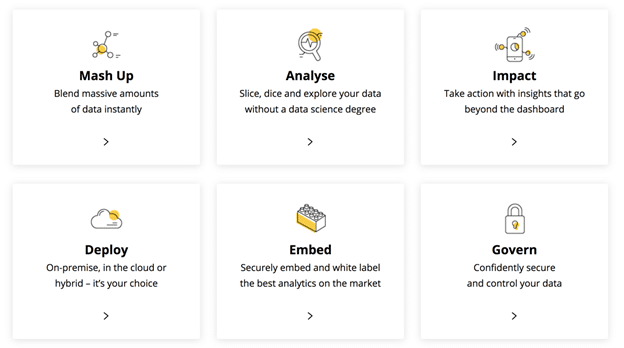Nowadays, data is everything. It’s the foundation behind every business decision, the secret to greater productivity, and even the foundation for creating an intensely personalized customer journey. Today, if your business isn’t utilizing complex data, you’re vulnerable to being left in the dust.
What is Complex Data?
Complex data is that which can revolutionize your business, but is not easily analyzed simply by glancing at it. This can be because it’s coming from numerous different sources, is literally “big” data in that the file size(s) are at least gigabytes large, if not more, or because you need to break it down significantly before it’s going to give you the knowledge you’re looking for.
So, how are businesses using complex data to get more done?
How Businesses are Using Complex Data to Get More Done
When it comes time to consider your options for using complex data within your existing business, you will likely come across a wide range and options. We will start by discussing each of these components and factors below.
The Right Tools
The first step to using complex data to get more done is having the right tools in place to analyze your information. As mentioned above, this isn’t something you can glance at and see instantaneously what you need to do or change to get the results you’re seeking. It doesn’t come packaged in a nearly presented graph – you’ve got to mine it for gold.
Fortunately, there are great tools available for you, including PEST analysis templates, which you can learn about more here, and sophisticated business data software platforms.

The truth is, there are scores of ways that you can start using and sorting complex data for the benefit of your business intelligence projects. Product teams, cloud data teams and analytics teams can use these resources to quickly analyze and present the data that matters to the stakeholders who need it most.
Reach Seamless User Experiences Sooner
It takes time to reach a near-perfect user experience. While all businesses must strive to grow and offer new and better solutions, it’s an uphill battle when you’re still working out the kinks.
When you’ve nailed your foundational user experience, you can work on improving your service and differentiating yourself from the competition.
Hire and Keep Better Team Members
Hiring the right person is, ultimately, a human decision.
But you can take out most of the leg work by working with complex data to see which candidates will be the best fit for the role, company, department, and even that elusive culture-fit.
Keep Logistics Flowing Seamlessly
If your business transports goods or people, you need the best data to keep your service moving flawlessly. In today’s culture, we expect everything to happen as soon as possible. We’re used to next-day delivery, or even same-day, and transport needs to be competent and timely.
Complex data can keep the logistical aspects of your business running like clockwork.
Reach the Right Decisions More Quickly
Speed is something we all want for our businesses, but it is often lost as we grow. Large organizations often lack the agility they need to offer their customers the best experiences. When this comes to a sector like healthcare, reaching the right decision fast can be a life or death decision.
Whether you’re dealing with a patient or customer you don’t want to lose, you need the right data as soon as possible. Complex data helps you to make the right decision on what steps to take moving forward.
Increase Your Bottom Line
It doesn’t matter what business you’re in – profitability is paramount. The problem is, often a large percentage of our profitability is eaten up on the small hidden costs and “slip-ups” that aren’t accounted for until it’s time to look at our profit and loss and other financial statements each quarter or at year’s end.
Analyzing complex data as part of your ongoing routine can help increase your bottom line, especially if your organization is spread across multiple territories.
Gain a Competitive Advantage
Complex data is just that – complex. This means that businesses often can’t or won’t go the extra mile to analyze it. If you use complex data to make essential business decisions, you’ll quickly gain a competitive advantage and dominate the marketplace.
Conversely, if you’re in a sector where all your major competitors are already using complex data, you’ll quickly be left behind. This not only ensures you keep up with your competitors, it will help you see where you can differentiate yourself so you’re the only business offering what you do, even in a crowded sector.

As you can see in the above example, when used correctly, data can also help you tell a better story through visuals and charts, in comparison to just numerical reports that are often less effective when translated to different audiences.
Connect the Organization Better Than Ever Before
Large organizations can often feel secular. As soon as you’re too big to all be under one roof sharing a workspace, divides can form between departments. If your business has a manufacturing department, or another aspect of the business that requires your departments to be separate from one another, shared data resources can help to unite the business once more.
When you utilize data well, your manufacturing department can be connected fully to the sales team, or the product development team, as well as marketing, finance and more. It means that complex data can be shared across the organization in the click of a button to bring your company together and ensure all have the insights they need, even if it is coming from the other side of the world.
Data is the present, but having the ability to make complex data simple is the future. The utilization of complex data is what will set many businesses ahead of the competition, allowing them to create better marketing campaigns, user experiences, interconnectivity within the organization, and streamline their processes. If you’re not yet using a tool to take advantage of complex data, it’s time to implement one so you aren’t left behind.


